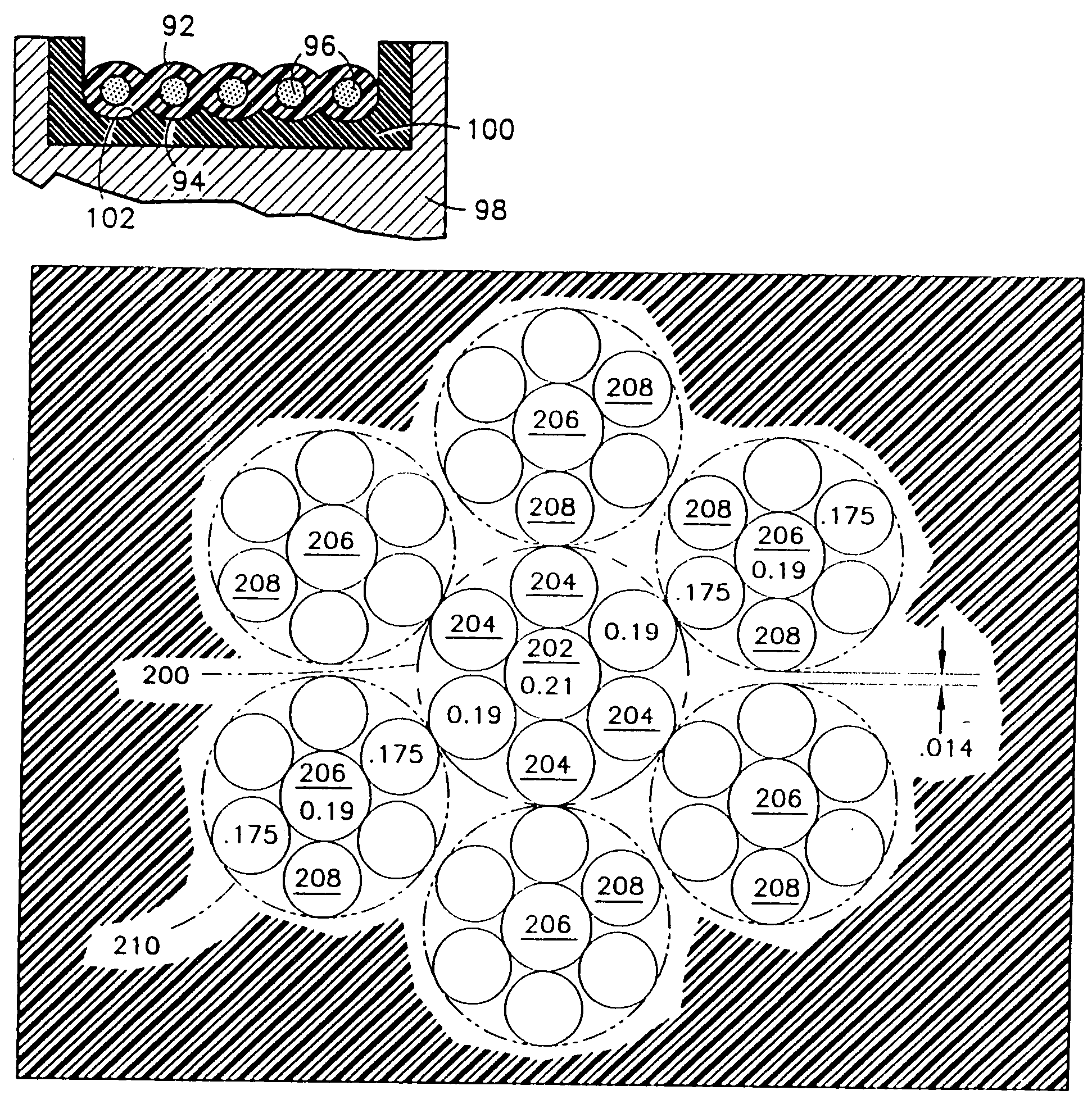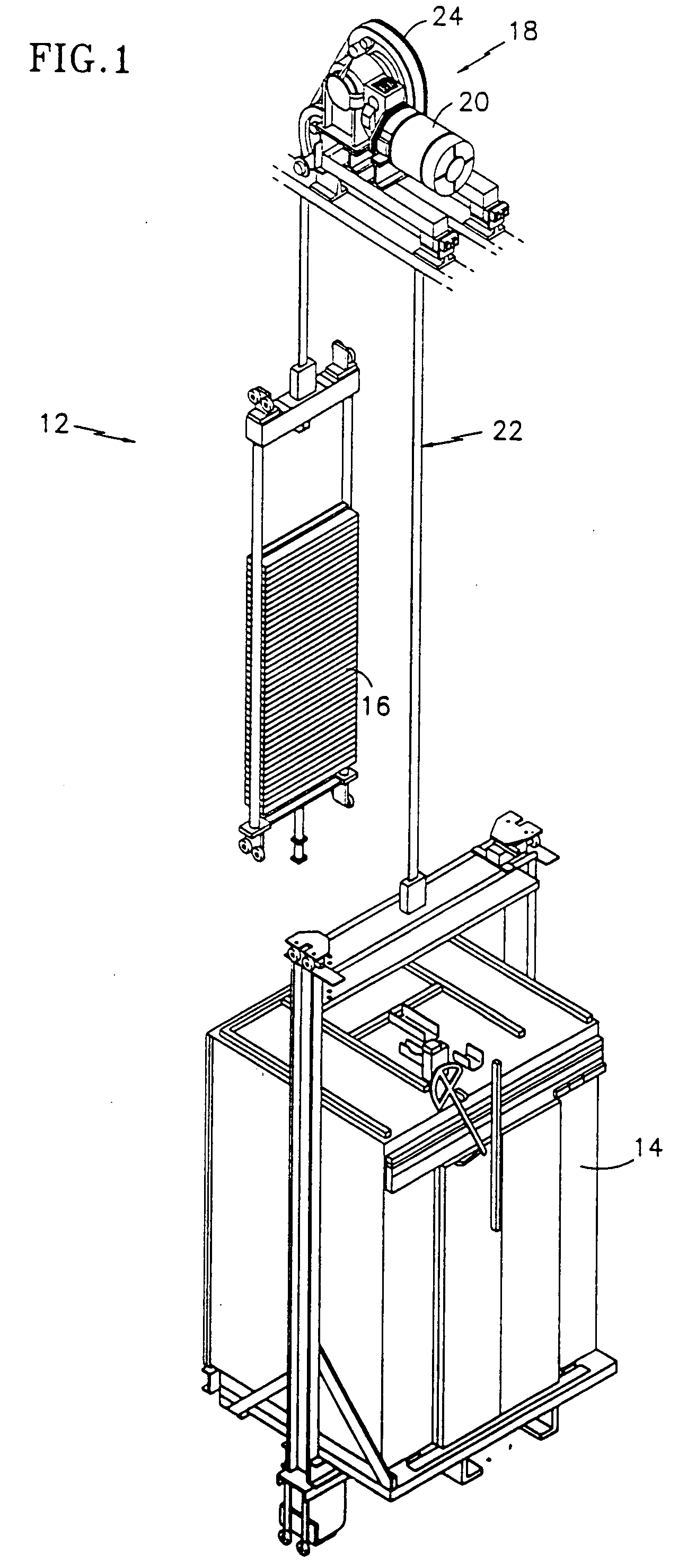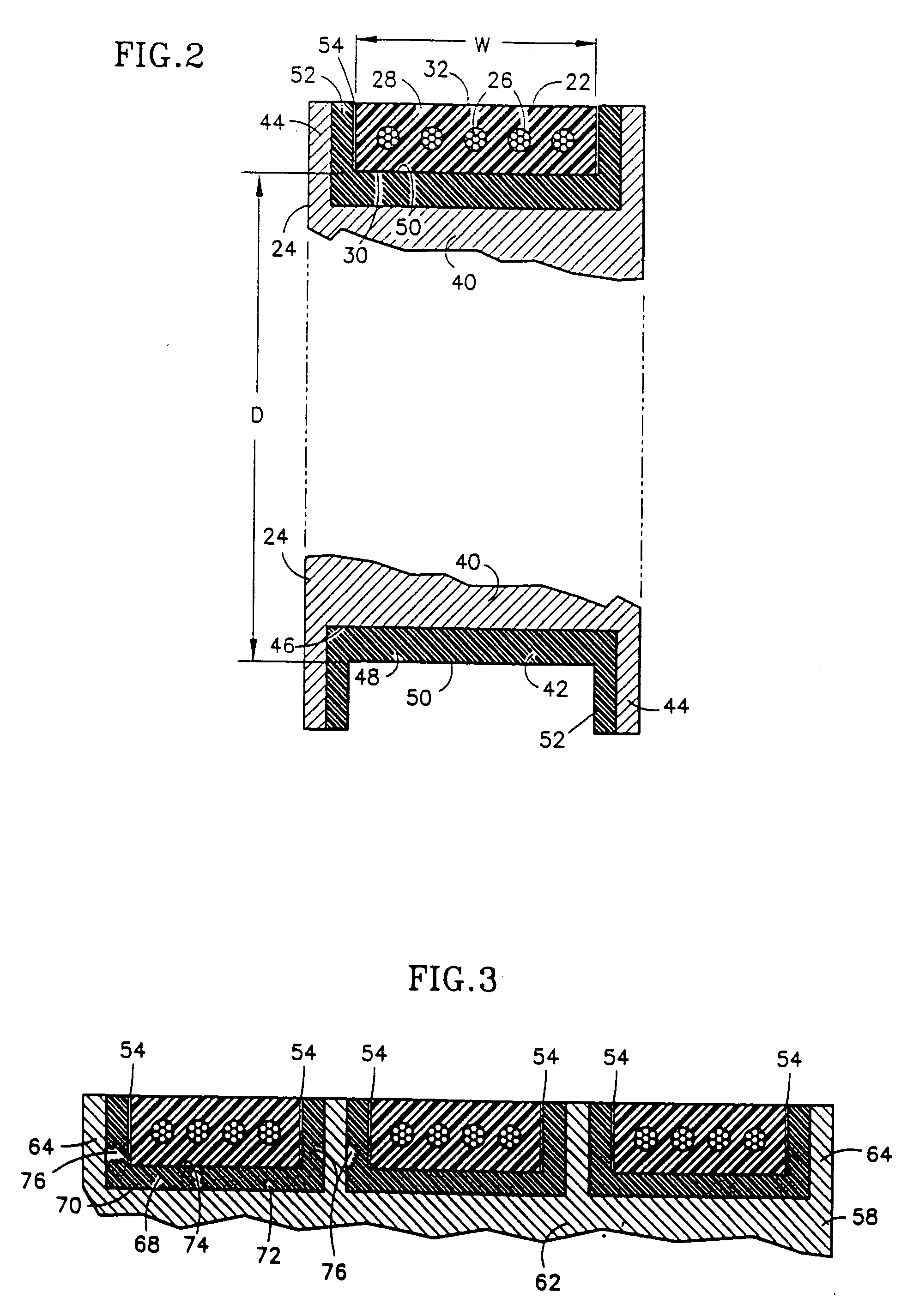Tension member for an elevator
- Summary
- Abstract
- Description
- Claims
- Application Information
AI Technical Summary
Benefits of technology
Problems solved by technology
Method used
Image
Examples
Embodiment Construction
[0025]Illustrated in FIG. 1 is a traction elevator system 12. The elevator system 12 includes a car 14, a counterweight 16, a traction drive 18, and a machine 20. The traction drive 18 includes a tension member 22, interconnecting the car 14 and counterweight 16, and a traction sheave 24. The tension member 22 is engaged with the sheave 24 such that rotation of the sheave 24 moves the tension member 22, and thereby the car 14 and counterweight 16. The machine 20 is engaged with the sheave 24 to rotate the sheave 24. Although shown as an geared machine 20, it should be noted that this configuration is for illustrative purposes only, and the present invention may be used with geared or gearless machines.
[0026]The tension member 22 and sheave 24 are illustrated in more detail in FIG. 2. The tension member 22 is a single device that integrates a plurality of cords 26 within a common coating layer 28. Each of the cords 26 is formed from preferably seven twisted strands, each made up of s...
PUM
| Property | Measurement | Unit |
|---|---|---|
| Shape | aaaaa | aaaaa |
| Metallic bond | aaaaa | aaaaa |
| Tension | aaaaa | aaaaa |
Abstract
Description
Claims
Application Information
 Login to View More
Login to View More - R&D
- Intellectual Property
- Life Sciences
- Materials
- Tech Scout
- Unparalleled Data Quality
- Higher Quality Content
- 60% Fewer Hallucinations
Browse by: Latest US Patents, China's latest patents, Technical Efficacy Thesaurus, Application Domain, Technology Topic, Popular Technical Reports.
© 2025 PatSnap. All rights reserved.Legal|Privacy policy|Modern Slavery Act Transparency Statement|Sitemap|About US| Contact US: help@patsnap.com



